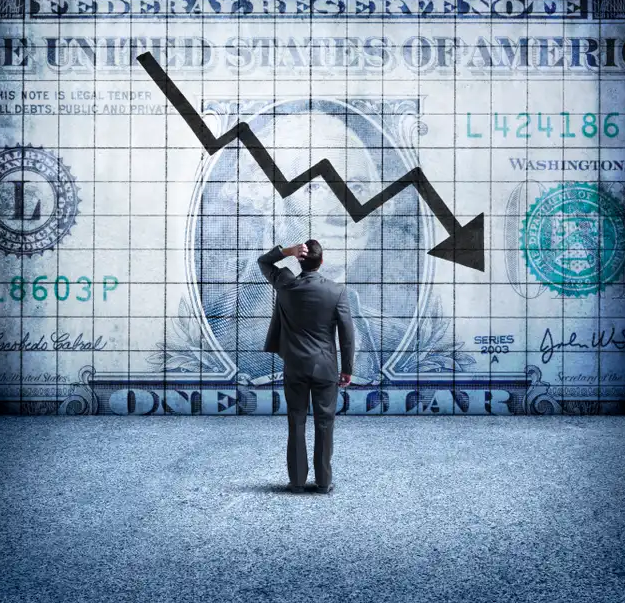10 reasons why the expected recession in the US never happened

Since the end of 2022, most major Wall Street companies have repeatedly predicted a recession that will hit the US economy this year.
But after more than six months of 2023, there are still no signs of the expected reduction in production. In any case, everything looks pretty optimistic: inflation is rapidly decreasing, the labor market is holding, unemployment has bottomed out, and stocks are boiling.
Even the highly inverted bond yield curve, considered a classic warning of an impending economic downturn, had little effect on investor sentiment, disconcerting many in markets and companies that were preparing for this event.
Economists of the Swiss banking giant UBS compiled a list of 10 reasons why the recession did not occur. Using the definition of the term given by the National Bureau of Economic Research, which tracks such criteria as consumption, production and unemployment, the bank has prepared a list of evidence indicating that the US economy is much more stable than many experts believe.
1. Monetary policy is still not so tight
Even after the Federal Reserve raised interest rates by a staggering 500 basis points over the past five quarters, the cost of borrowing adjusted for inflation in the US remains very low. The yield on 10-year Treasury securities indexed to inflation is currently only 1.52%.
According to UBS, the balance sheet of the central bank, which is closely related to the amount of money it has invested in the economy through the purchase of assets, is still 80% larger than before the pandemic. This suggests that monetary conditions are still not tight by historical standards.
"Financial conditions have improved in 2023, and the Fed's balance sheet and money supply are very adaptive compared to pre-pandemic trends," says the Swiss bank's report.
2. State expenditures are growing again
State expenditures are growing again after last year's setback due to the generosity of the days of the pandemic. And this also increases the amount of money available in the financial system, softening the economy.
According to UBS, the Inflation Reduction Act of 2022 also helped stimulate investment, especially in the manufacturing sector.
3. Strong Savings Fuel Consumption Savings
accumulated during the pandemic acted as a buffer against the rise in the cost of living, supporting consumption in the US economy. In addition, the rise in prices of financial assets increased overall wealth.
On the other hand, most mortgage loans are tied to fixed rates, and this has protected these borrowers from the impact of Fed rate hikes.
4. The level of debt is not too high
"The levels of consumer debt and the level of overdue debt are in much better shape compared to the pre-crisis period of 2008," the bank said in a statement. "The debt load of households seems manageable. Arrears on credit cards are growing, but at a historically low level."
According to UBS, companies are not suffering from overinvestment, and high inflation has led to a reduction in high debt levels.
5. Credit conditions have not tightened much
Credit market conditions have not become unfavorable for corporate borrowers, even after the banking shocks at the beginning of this year prompted some banks to refuse lending.
According to UBS, high-yield bond spreads have been declining since the beginning of the year, which means that companies with lower credit ratings have easier access to government debt than twelve months ago. The issue of such debt obligations is also growing.
6. The labor market remains stable
American employers continue to add a significant number of new jobs, as a result of which applications for unemployment benefits in the economy fall below the average indicators before the pandemic.
"Wages are catching up with their pre-pandemic trend. The level of employment is mostly approaching the pre-pandemic level," says the UBS note.
7. Trends in economic data stabilize
According to the Swiss Bank, the pandemic has disrupted cyclical patterns in economic data, but they are returning to normal. And this probably signals that the economy is on a more stable basis.
"Expenditures on goods and services are returning to normal. Volatility in job growth has returned to pre-pandemic levels," UBS said in a statement. "Bottlenecks in supplies are also weakening, although they are not returning to normal."
8. Industry downturns
According to the bank, individual downturns in activity in different sectors of the economy could to some extent help prevent a full-scale recession.
According to UBS, in 2022, both production in the United States and housing construction fell sharply, but now they may be recovering.
9. The growth of services remains stable.
Although some slowdown is observed in the manufacturing industry, its share in the economy is decreasing, and steady growth is observed in the larger service sector.
"The consumption of services recovered more slowly, but is still growing, and it accounts for a much larger share of the economy," the bank said. "The share of the manufacturing sector in the private sector continues to decline."
10. The economy has become less cyclical
According to UBS, the US economy has structurally developed in such a way that it is now less vulnerable to cyclical ups and downs.
"This is a knowledge-based service economy that has become less sensitive to inventory cycles and energy costs, and as a result, economic activity has become less volatile and expansion can last longer," the bank said in a statement.



















